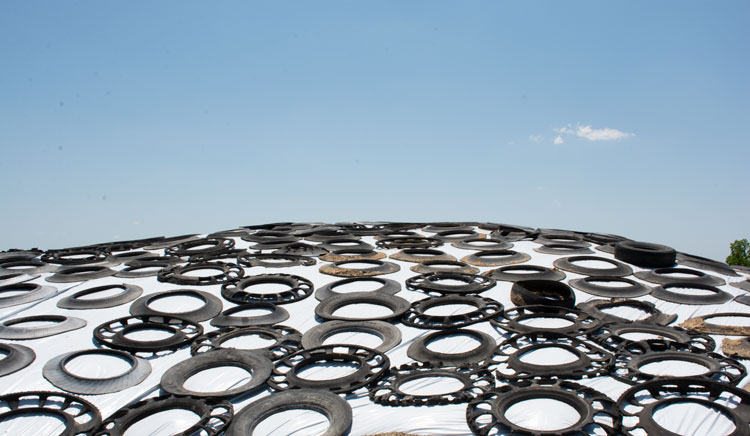
“For bunker silos and drive-over piles and similar storage methods, the uppermost layer of forage is more prone to oxygen exposure and loss of dry matter and nutrients,” Iowa State’s Emily Bransted and Hugo Ramirez-Ramirez said in a recent extension article. “In other words, the money stored as fermented forage can ‘evaporate’ into thin air.”
In these bunker and drive-over piles, shrink can be as high as 20 percent of the forage, and this fall, you only get one chance to put up high-quality silage. How that gets accomplished determines not only feed quality and milk production for the year, but also the price per bite of the forage.
Oxygenated silage, or silage that is exposed to oxygen, is wasted forage both from a nutritional and economic perspective. The question is, “How do you plan to prevent it?”
Bransted and Ramirez-Ramirez recommend checking the oxygen transmission rate of the material utilized to cover silos. Although the popular black and white plastic is an excellent barrier for the elements, most varieties tend to be relatively poor oxygen blockers.
The oxygen transmission rate of black and white plastic can range from 100 to 1,000 cubic centimeters per square meters in a 24 hour period. With that in mind, consider the oxygen penetrating damage that can be done to the topmost 1 to 3 feet of a bunker or pile.
The Iowa state graduate research assistant and assistant professor suggest providing a molecular barrier to oxygen in the form of an oxygen barrier film that can reduce oxygen transmission rates to single digits.
“Producers should review oxygen transmission rate tests performed by independent laboratories to gauge the quality of a given film,” they suggested.
With that in mind, providing both a physical and molecular barrier for silage might mean more nutrition and more bites for your dollar of forage next year.








